The consequences of excessive alcohol consumption are a long-known phenomenon in human history. The painful consequences are already described in the Bible in the book of Isaiah 5:11: “Woe to those who rise early in the morning to indulge in drinking…”. However, the delayed effects of alcohol don't just lead to pain. They cause severe cognitive defects, misjudgments, and a reduction in visual and acoustic perceptions with severe strain on professional and social life. The dangerous effects of hangovers are already described in Greek mythology. According to Homer's Odyssey, Elpenor, a companion of Odysseus, drank too much wine in the evening. He went to sleep drunk on the roof of Kirke's house. In the morning he was startled by the noise of his companions preparing for the journey to the underworld. Due to time-delayed alcohol-induced headaches with impaired visual spatial perception and misjudgment of the situation, he did not take into account that he was on the roof, was startled, fell backwards and died from a broken neck. All because of delayed alcohol-induced headaches.
The origin of the name “Tomcat” is not exactly clear. One explanation is based on the proximity to the term “catarrh”. In popular terms, this refers to a symptom complex of headaches, malaise and a feeling of illness. The origins are also discussed in connection with the term “cat whine” as a miserable feeling after an intoxication. This reflects the painfully plaintive nocturnal whining of tomcats in heat. In the student language of Goethe's time, the term “Kotzen-Jammer” is used, which aptly addresses nausea, vomiting, feeling ill, headaches including remorse and self-reproach for consuming too much alcohol.
Scientific findings from the last three decades on the development and treatment of delayed alcohol-induced headaches are summarized below. They suggest that alcohol hangover includes cardiovascular, hormonal, psychomotor and cognitive disorders. These can occur regardless of the quantity of alcohol consumed or the frequency of drinking.
Clinical picture and symptoms
uniform definition of hangover headaches or the after-effects of alcohol, the scientific term is time-delayed alcohol-induced headaches . Scientific studies have identified the following main symptoms: headache, diarrhea, loss of appetite, tremors, tiredness, fatigue, feeling sick and nausea. For around two thirds of those affected, the focus is on headaches and a pronounced feeling of illness. alcohol-induced headache in the current international headache classification ICHD-3 under . It distinguishes between two subgroups, immediate alcohol-induced headache (code 8.1.4.1) and delayed alcohol-induced headache (code 8.1.4.2).
The immediate headache induced by alcohol intake occurs within 3 hours of alcohol intake. It wears off within 72 hours of stopping drinking alcohol. The headache characteristics are expressed in a bilateral headache with a pulsating pain character, the pain is intensified by usual physical activity. The effective amount of alcohol that causes an immediate headache varies greatly between different sufferers. For people who suffer from migraines, a small amount is often enough.
Much more common than immediate alcohol-induced headaches is delayed alcohol-induced headaches. The internationally defined technical term for the headache that was previously referred to as “hangover” is now “delayed alcohol-induced headache”. The headache picture is characterized by a headache that occurs within 5-12 hours after drinking alcohol. The headaches subside within 72 hours at the latest. The headache characteristics are manifested by a bilateral occurrence, a pulsating quality of pain, the headache is intensified by routine physical activities. Delayed alcohol-induced headache is one of the most common forms of secondary headaches. Other symptoms include reduced ability to work, reduced cognitive abilities, impaired spatial perception, changes in blood flow and hormonal metabolism. Symptoms vary greatly from person to person and from occurrence to occurrence. The main focus is on delayed headaches and a general feeling of illness after taking alcohol.
Social effects of alcohol hangovers
Time-delayed alcohol-induced headaches have serious social and economic consequences. According to a British study, around 2 billion in lost time costs are incurred every year due to incapacity to work due to time-delayed alcohol-induced headaches. Similar conditions can be seen in other countries. The annual cost per worker due to delayed alcohol-induced headaches is estimated to be approximately $2,000 per worker.
In Finland alone, time-delayed alcohol-induced headaches cause more than 1 million days of incapacity for work every year. Light to moderate alcohol consumption is the most common cause of incapacity to work.
More than 54% of all alcohol-related problems at work are caused by light alcohol consumption. The most common reason for the negative consequences of alcohol consumption is the time-delayed alcohol-induced headache. Chronic alcohol consumption, on the other hand, is only responsible for a small part of the total economic costs of alcohol-related consequences.
The widespread prevalence of delayed alcohol-induced headaches is worrying. Among college students, 25% report experiencing a delayed alcohol-induced headache in the last week. 75% of people who have consumed alcohol report experiencing a delayed alcohol-induced headache at least once. Of these, 15% say they get a delayed alcohol-induced headache at least once a month.
Individual consequences of delayed alcohol-induced headaches
Time-delayed alcohol-induced headaches are often viewed as an unpleasant social phenomenon that is part of partying. However, this overlooks the fact that delayed alcohol-induced headaches increase the risk of reduced work performance, illness, accidents and even death. The effects of alcohol on the organism are still present even when no alcohol can be detected in the blood at all. Affected patients show, among other things, a reduced ability to visually perceive space, memory and concentration. The ability to organize and carry out tasks is reduced. Corresponding findings were discovered in pilots, drivers and athletes. The risk of death from cardiovascular events is also increased. There are changes in the electroencephalogram (EEG), in the processing of acoustic signals, dehydration and balance disorders. The concentrations of antidiuretic hormone (ADH), aldosterone, renin and cortisol are increased, growth hormone is reduced and metabolic acidosis develops. The production of pituitary hormones is inhibited.
Risk of future alcohol consumption due to hangovers
It is often assumed that delayed alcohol-induced headaches act as a punishment to prevent future alcohol consumption. However, there is no evidence of this. There is also no evidence that effective treatment of delayed alcohol-induced headaches promotes further subsequent alcohol consumption. On the contrary, there is evidence that the occurrence of delayed alcohol-induced headaches makes even higher alcohol consumption more likely. Study data shows that people who experience particularly severe time-delayed alcohol-induced headache symptoms try to consume even more alcohol to suppress the symptoms.
Development of delayed alcohol-induced headaches
The development of time-delayed alcohol-induced headaches has not yet been precisely clarified. The theories of its origin include the following mechanisms:
- Time-delayed alcohol-induced headaches are a first stage of alcohol withdrawal. This theory must be countered by the fact that both the hormonal and cardiovascular changes of time-delayed alcohol-induced headache differ significantly from those of alcohol withdrawal.
- Time-delayed alcohol-induced headaches do not occur directly in a dose-dependent manner with the amount of alcohol consumed, although higher doses of alcohol may be associated with increased symptoms. Acetaldehyde, a breakdown product of alcohol, is associated with the development of delayed alcohol-induced headaches.
- Fusel substances in individual alcoholic beverages may increase the frequency and severity of delayed alcohol-induced headaches. They are particularly found in cognac, wine, tequila and liqueurs. Transparent alcoholic beverages such as rum, vodka and gin, on the other hand, show a lower frequency of delayed alcohol-induced headaches. This could also be why clear alcoholic beverages are used more frequently in chronic alcoholism.
- The symptoms of delayed alcohol-induced headaches such as nausea, headaches and diarrhea show parallels to a disturbed cytokinin metabolism, such as in viral infections. Alcohol leads to an increase in thromboxane. Painkillers such as tolfenamic acid, a prostaglandin inhibitor, and other analgesics from the NSAID group, which are taken while alcohol is being consumed, have a partial preventive effect on the severity of the symptoms of delayed alcohol-induced headache.
- Hormonal changes have also been linked to the development of delayed alcohol-induced headaches. The severity of the symptoms of delayed alcohol-induced headaches is proportional to the concentration of antidiuretic hormone (ADH). Alcohol inhibits the effect of ADH on the kidneys. This causes an increased urge to urinate, which is greater than the actual fluid consumed would cause. As dehydration increases, relative serum levels of ADHA continue to increase. This leads to progressively prolonged excessive fluid loss in patients with delayed alcohol-induced headache. Accordingly, fluid intake can improve the symptoms of delayed alcohol-induced headaches, although not completely eliminate them.
- Alcohol also appears to inhibit glucose availability through an insulin-mediated mechanism. Both acute alcohol intoxication and delayed alcohol-induced headaches cause metabolic acidosis. This inhibits energy absorption in the nerve and muscle cells.
- Time-delayed alcohol-induced headaches cause an increase in heart rate, left ventricular performance and blood pressure. The increased cardiovascular death rate associated with time-delayed alcohol-induced headaches can be explained by the increased cardiac performance demand with normal peripheral resistance.
- The reduction in electrical activity on the electroencephalogram can be revealed even 16 hours after the normalization of blood alcohol levels. Negative influences on auditory perception, cognition and psychomotor deficits indicate diffuse cortical inhibition.
- A study revealed a special hangover gene. Repeated use of alcohol can lead to the development of alcohol tolerance. This is characterized by an acquired resistance to the physiological, behavioral and psychological effects of alcohol. As a result, higher levels of alcohol can be consumed, which can promote physical dependence and alcoholism. A special gene is required for the development of alcohol tolerance.
- Individual differences in sensitivity to delayed alcohol-induced headaches and resistance to delayed alcohol-induced headaches are genetically determined.
- A literature comparison on the occurrence of time-delayed alcohol-induced headaches consistently showed that 23% of the population is resistant to time-delayed alcohol-induced headaches. It can be assumed that this resistance influences drinking behavior and the development of alcohol addiction.
- The severity of delayed alcohol-induced headaches is correlated with an increased risk of alcohol dependence, depression and other mental disorders. If time-delayed alcohol-induced headaches only occur occasionally, those affected should be advised that an alcohol amount of 1.5 g/kg can usually lead to time-delayed alcohol-induced headaches in all people. This amount is achieved with approximately 5-6 drinks for a man weighing 80 kg and 3-5 drinks for a woman weighing 60 kg.
- Smoking on days with increased alcohol consumption leads to an increased intensity and probability of occurrence of delayed alcohol-induced headaches.
- Time-delayed alcohol-induced headaches are more likely to occur in young people than in older people.
- Animal experiments have shown that there is mitochondrial dysfunction in the cerebellum of mice during time-delayed alcohol-induced headaches and that this can contribute to the lasting effects of alcohol, even though alcohol can no longer be detected in the blood.
- Both migraines and cluster headaches can be triggered by alcohol. Even small amounts of alcohol can trigger these primary headaches. Migraine sufferers consume fewer alcoholic beverages, especially beer and liqueur. They are more sensitive to delayed alcohol-induced headaches than non-migraineurs. Since even small amounts of alcohol can trigger migraine attacks in migraine patients, similar mechanisms for the development of migraine attacks and time-delayed alcohol-induced headaches are discussed.
- The precise analysis of the symptoms of delayed alcohol-induced headaches and the factors that cause and modulate them is incomplete. Standardized measuring instruments for recording the characteristics of time-delayed alcohol-induced headaches only exist to a limited extent. An alcohol dose of 1.5 to 1.75 g/kg body weight, taken within 4-6 hours, usually causes time-delayed alcohol-induced headaches. Factors that increase the likelihood of delayed alcohol-induced headaches include lack of nutritional intake, reduced sleep quality and quantity, increased physical activity, dehydration and reduced general physical condition.
Treatment of delayed alcohol-induced headaches
Adequate fluid and oxygen supply are the basis of prevention. Many of those affected only see the problem in connection with subjective complaints such as headaches and a feeling of illness. Therefore, they should be made particularly aware of the cognitive, affective and psychomotor effects of time-delayed alcohol-induced headaches.
The comparison of the beta blocker propranolol with placebo in the prevention of delayed alcohol-induced headaches could not prove a significant effect.
In one study, taking tolfenamic acid, a prostaglandin inhibitor, showed a preventive effect when taken simultaneously with alcohol consumption.
Consuming glucose at the same time as alcohol consumption reduced the error rate in reaction tests by 50% 15 hours later. However, the severity of delayed alcohol-induced headaches was not affected. In another study, however, the effect of glucose or fructose administration on the subjective or objective symptoms of delayed alcohol-induced headaches could not be confirmed.
The preventive effect of fructose for delayed alcohol-induced headaches is often discussed. A recent animal study showed that honey dose-dependently reduces alcohol-related activity changes in mice. Honey was also able to significantly reduce the blood alcohol levels of alcohol-intoxicated mice. The findings suggest that honey can actually counteract the toxic effects of alcohol.
Another study showed a prophylactic effect of vitamin B6. The severity of the symptoms of delayed alcohol-induced headaches was reduced by around 50%. During the study, 50% of participants received 1,200 mg of vitamin B6 (400 mg at the start of the celebration, 400 mg 3 hours later, and 400 mg at the end of the celebration). 50% received placebo. On a scale of 1-10, the test participants treated with verum showed a value of 3.2 + 2.8 and the participants treated with placebo showed a value of 6.8 + 3.8.
The range and recommendations for time-delayed alcohol-induced headache treatments seem immeasurable. Pittler et al (2005) analyzed the available controlled trials for the treatment of delayed alcohol-induced headaches. The analysis showed that there is no convincing evidence that any conventional or unconventional treatment is effective in preventing or treating delayed alcohol-induced headaches. There is only evidence that γ-linoleic acid from borage (cucumber herb), tolfenamic acid, fructose, vitamin B6 and a yeast preparation may be effective. However, these studies have not been replicated and have only been carried out on small groups of test subjects.
The best treatment therefore remains the effective prevention of delayed alcohol-induced headaches through moderate alcohol consumption.
Below is a selection of treatment suggestions for delayed alcohol-induced headaches on the Internet. There is no evidence of effectiveness for any of these suggestions:
- Acetylsalicylic acid
- Bananas
- Bloody Mary
- Buttermilk
- Calcium
- Cysteine
- dialysis
- Shower
- Eggs
- Ice packs
- Fresh air
- fruit juice
- Barley grass
- ginseng
- Glutamate
- Green tea
- Hot bath
- Honey
- Ibuprofen
- Jaegermeister
- Coffee
- Cabbage
- Charcoal tablets
- Drink counter beer
- Milk drinks
- Multivitamins
- olive oil
- Paracetamol
- Pizza
- Repair Seidl
- Raw eggs
- Russian party
- Sleep
- Sports
- Tabasco sauce
- tomato ketchup
- vitamin C
- Vitamin B complex
- Water
- Worchester sauce
- lemon juice
literature
Wiese JG, Shlipak MG, Browner WS. The alcohol hangover. Ann Intern Med. 2000, Jun 6;132(11):897-902. Review. PubMed PMID: 10836917.
Pittler MH, Verster JC, Ernst E. Interventions for preventing or treating alcohol hangover: systematic review of randomized controlled trials. BMJ. 2005, Dec 24;331(7531):1515-8. Review. PubMed PMID: 16373736; PubMed Central PMCID:PMC1322250.
Shi P, Chen B, Chen C, Xu J, Shen Z, Miao X, Yao H. Honey reduces blood alcohol concentration but does not affect the level of serum MDA and GSH-Px activity in intoxicated male mice models. BMC Complement Altern Med. 2015 Jul 14;15:225. doi: 10.1186/s12906-015-0766-5. PubMed PMID: 26169497; PubMed Central PMCID:PMC4499888.[/fusion_builder_column][/fusion_builder_row][/fusion_builder_container]


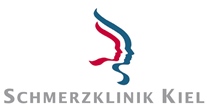
















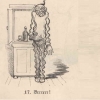
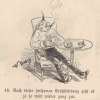

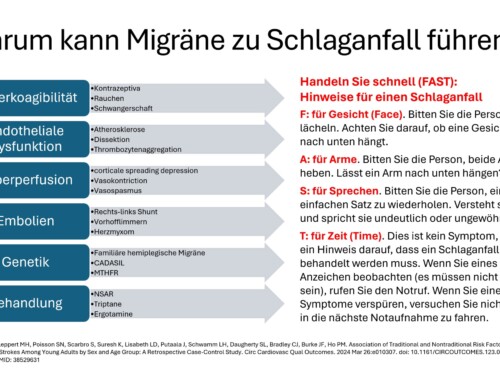

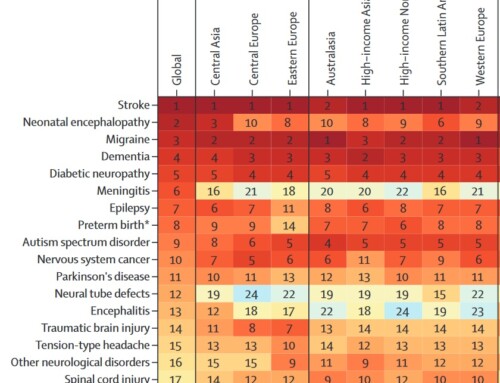

This post was very informative as I probably suffer from this syndrome. I am very interested in further information.